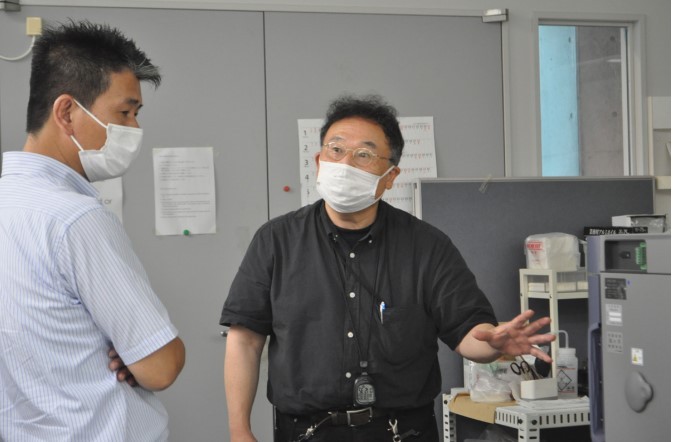Pioneering Film Deposition Technology Unconstrained By The Field Framework
- 02 Jun 2023
- Volume 24
- NANOscientific Magazine, Spring 2023
An interview with Professor Tetsuya Yamamoto at Materials Design Center,
Kochi University of Technology

Q1: What prompted you to focus on filmforming technology?
My interest in zinc oxide as a material for energy solutions was sparked when I was stationed in the US in 1994. Since then, we have been working to develop functional thin films that are low-temperature, lowenergy, and low-damage. Our ultimate goal is to create a product that can be used to address energy issues.
Q2: How did you commercialize film-forming technology?
In 2004, we scaled up production of transparent conductive films using zinc oxide, and in 2012, we developed a new electrode using zinc oxide as a substitute for rare indium, contributing to practical use as a world-standard basic technology. We also developed a technology to generate oxygen negative ions from arc plasma in a plasma deposition device and irradiate them onto metal oxide thin films, controlling surface structure and chemical state at low temperatures and low applied voltage to create functional materials that meet practical needs.

Q3: What specific technology is this?
The uniqueness of this technology lies in the utilization of electrons (e-) that remain in the plasma deposition apparatus. High electron affinity oxygen gas is injected to film-growth apparatus, adsorbing electrons in a high density to generate oxygen negative ions. The negatively charged oxygen ions are attracted to the substrate on which the thin film to be treated is deposited. This is because a positive voltage is applied to the substrate with the thin film. This produces oxide thin films exhibiting properties intentionally designed. If the above substrate is only a metal plate substrate, the oxygen-engineering technology will enable to produce a substrate with few defects and in a thermally stable oxide state. Sumitomo Heavy Industries, Ltd. has put this technology into practical use and commercialized it as negatively charged oxygen (O- ) ion generation and irradiation device.
Q4: It was reported that you were able to visualize the arrangement of atoms. How was this possible?
We developed a method of depositing a metal oxide thin film in an amorphous state, where metal atoms and oxygen atoms are randomly arranged at room temperature, on a glass substrate, and gradually heating it from the back side of the substrate. During the heating process, the metal and oxygen atoms move individually, whereas those atoms interact with each other, aligning them from an implicit order state in a short range, as called as amorphous state, into an explicit ordered state in a long range. This forms a lattice system with a space group, as a result. We succeeded in visualizing the dynamic process of changing into a crystalline state in which metal atoms and oxygen atoms are regularly arranged at 180°C.These results are due to joint research and development with Rigaku Corporation.
Q5: What was the key to the successful observation at the atomic scale, and how has that ability enabled the development of a manufacturing process with high reproducibility and good yield?
During the film formation stage, when metal elements and oxygen atoms create strong chemical bonds and the entire film becomes ordered, it becomes difficult to observe dynamic atomic behavior. In other words, in the first stage of the deposition, the key is to create a thin film that is composed of "functional core" consisting of many atoms showing no apparent, however implicit order. By applying appropriate energy to the thin film in the second step, it would become possible to create a thin film that exhibits intentionally controlled characteristics as functions. Until now, we had to repeat trial and error many times to determine the optimal conditions such as heating temperature and heating time. This visualization technology will provide scientific insight into the atomic order that produces the properties. As a result, the realization of a manufacturing process with high reproducibility and good yield will be embodied. This leads to reduced research and development costs. It can be said that the wisdom of mankind was the catalyst for entering the atomic world. Based on this result and demonstration, we were able to start research on creating low-temperature, low-energy, low-damage functional thin films.
